
Black Hat Europe 2022 NOC: The SOC Inside the NOC
December 22, 2022
What are the biggest trends coming in 2023? Our leaders weigh in. Hear it here first.
December 23, 2022Black Hat Europe 2022 NOC: When planning meets execution
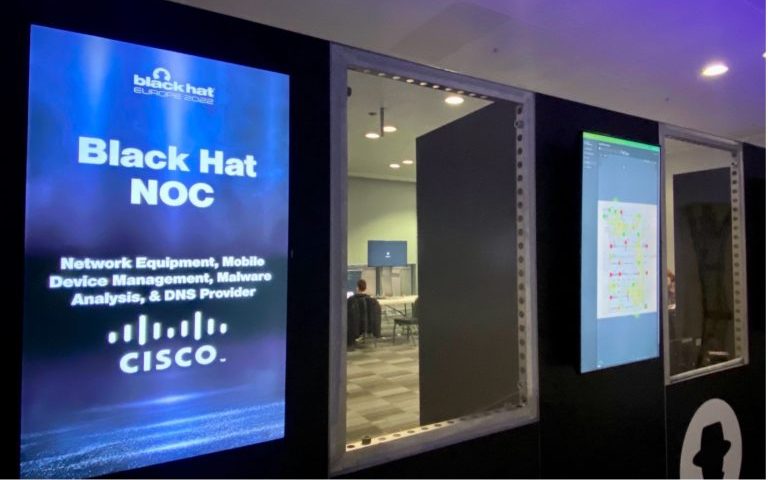
In this blog about the design, deployment and automation of the Black Hat network, we have the following sections:
- Designing the Black Hat Network, by Evan Basta
- AP Placement Planning, by Sandro Fasser
- Wi-Fi Air Marshal, by Jérémy Couture, Head of SOC, Paris 2024 Olympic Games
- Meraki Dashboards, by Rossi Rosario Burgos
- Meraki Systems Manager, by Paul Fidler
- A Better Way to Design Training SSIDs/VLANs, by Paul Fidler
Cisco is honored to be a Premium Partner of the Black Hat NOC, and is the Official Network Platform, Mobile Device Management, Malware Analysis and DNS (Domain Name Service) Provider of Black Hat.

2022 was Cisco’s sixth year as a NOC partner for Black Hat Europe. However, it was our first time building the network for Black Hat Europe. We used experiences of Black Hat Asia 2022 and Black Hat USA 2022 to refine the planning for network topology design and equipment. Below are our fellow NOC partners providing hardware, to build and secure the network, for our joint customer: Black Hat.

Designing the Black Hat Network, by Evan Basta
We are grateful to share that Black Hat Europe 2022 was the smoothest experience we’ve had in the years at Black Hat. This is thanks to the 15 Cisco Meraki and Cisco Secure engineers on site (plus virtually supporting engineers) to build, operate and secure the network; and great NOC leadership and collaborative partners.
To plan, configure, deploy (in two days), maintain resilience, and recover (in four hours) an enterprise class network, took a lot of coordination. We appreciate the Black Hat NOC leadership, Informa and the NOC partners; meeting each week to discuss the best design, staffing, gear selection and deployment, to meet the unique needs of the conference. Check out the “Meraki Unboxed” podcast – Episode 94: Learnings from the Black Hat Europe 2022 Cybersecurity Event
We must allow real malware on the Black Hat network: for training, demonstrations, and briefing sessions; while protecting the attendees from attack within the network from their fellow attendees, and prevent bad actors from using the network to attack the Internet. It is a critical balance to ensure everyone has a safe experience, while still being able to learn from real world malware, vulnerabilities, and malicious websites.
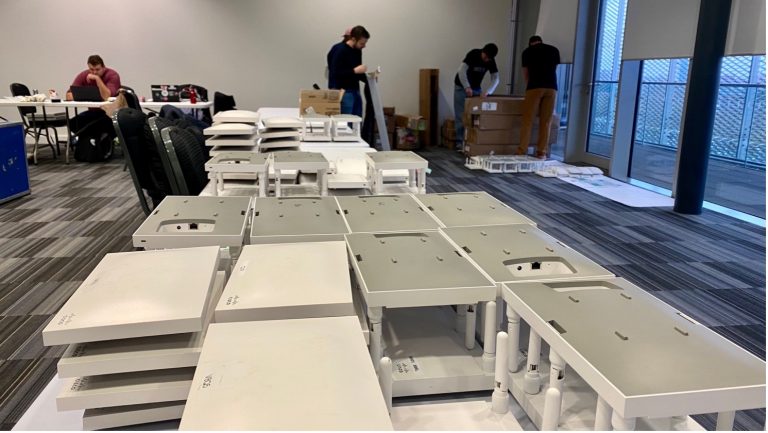
In addition to the weekly meetings with Black Hat and the other partners, the Cisco Meraki engineering team of Sandro Fasser, Rossi Rosario Burgos, Otis Ioannou, Asmae Boutkhil, Jeffry Handal and I met every Friday for two months. We also discussed the challenges in a Webex space with other engineers who worked on past Black Hat events.
The mission:
- Deploy 100+ Meraki access points to provide Wi-Fi to four conference levels, a dozen plus training courses, dozens of briefings, keynotes and the business hall
- Deploy 75 ten-foot (three meter) tripods and brackets, purchased by Cisco Meraki global events
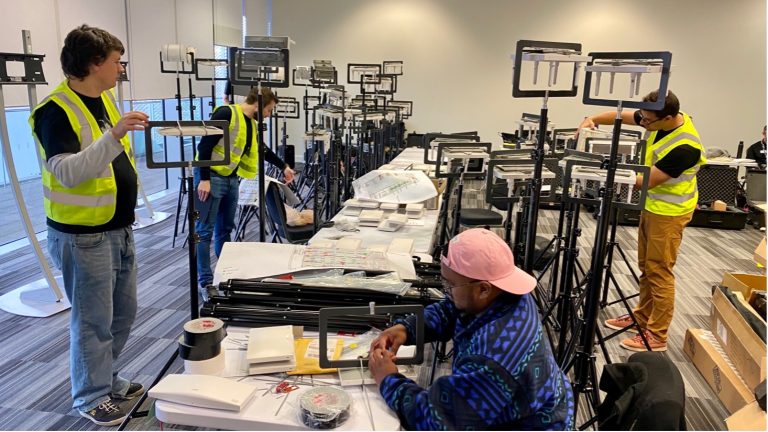
- Deploy nine Meraki cloud managed switches and three Meraki MX security appliances to connect with the partner appliances
- Manage ~100 iOS registration and lead management devices, secured by Meraki Systems Manager, Umbrella and by the Cisco Security Connector for iOS
Division of labor is essential to reduce mistakes and stay laser focused on security scope. Otis took the lead working on network topology design with Partners. Asmae handled the port assignments for the switches. Rossi ensured every AP and Switch was tracked, and the MAC addresses were provided to Palo Alto Networks for DCHP assignments. Otis and Rossi spent two days in the server room with the NOC partners, ensuring every switch was operating and configured correctly. Rossi also deployed and configured a remote Registration switch for Black Hat.
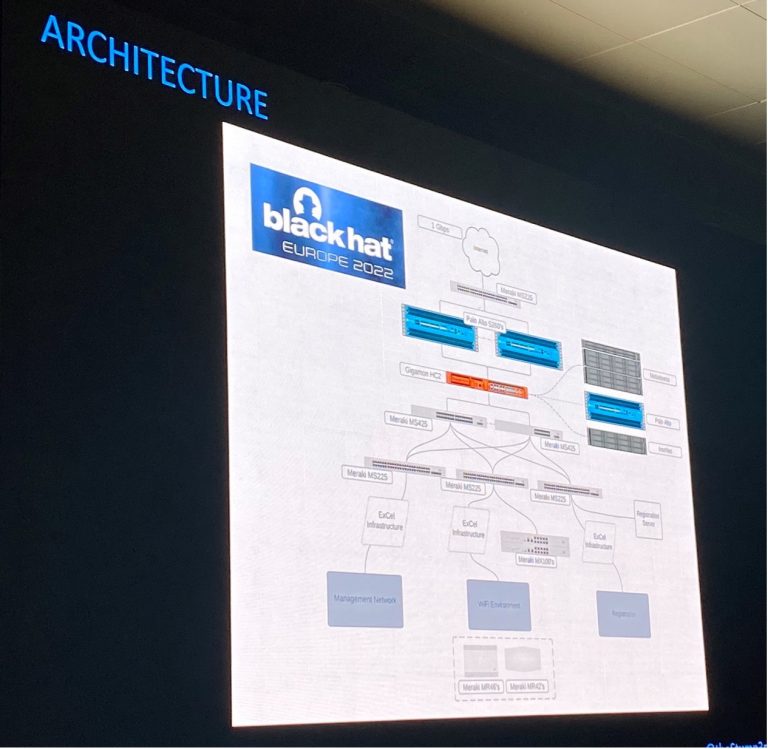
AP Placement Planning, by Sandro Fasser
In the weeks before deployment, our virtual Meraki team member, Aleksandar Dimitrov Vladimirov, and I focused on planning and creating a virtual Wi-Fi site survey. Multiple requirements and restrictions had to be taken into consideration. The report was based on the ExCel centre floor plans, the space allocation requirements from Black Hat and the number of APs we had available to us. Although challenging to create, with some uncertainties and often changing requirements due to the number of stakeholders involved, the surveys AP placement for best coverage ended up being pivotal at the event.
Below is the Signal Strength plan for the Expo Hall Floor on the 5 GHz band. The original plan to go with a dual-Band deployment was adjusted onsite and the 2.4 GHz band was disabled to enhance performance and throughput. This was a decision made during the network setup, in coordination with the NOC Leadership and based on experience from past conferences.
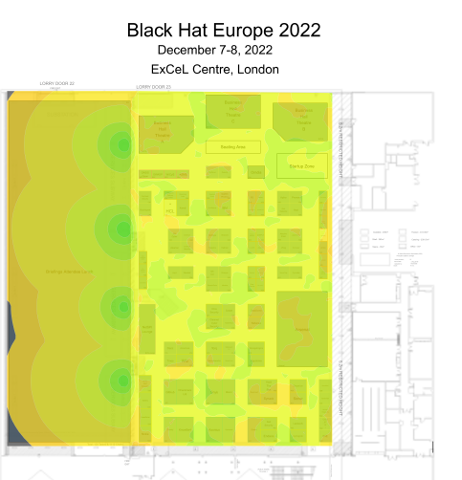
Upon arrival at the ExCel Centre, we conducted a walkthrough of the space that most of us had only seen as a floor plan and on some photos. Thanks to good planning, we could start deploying the 100+ APs immediately, with only a small number of changes to optimize the deployment on-site. As the APs had been pre-staged and added to the Meraki dashboard, including their location on the floor maps, the main work was placing and cabling them physically. During operation, the floor plans in the Meraki Dashboard were a visual help to easily spot a problem and navigate the team on the ground to the right spot, if something had to be adjusted.
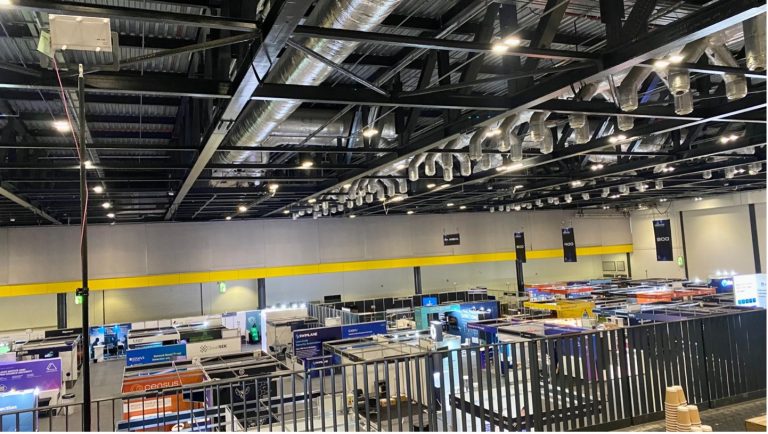
As the sponsors and attendees filled each space, in the Meraki dashboard, we were able to see in real-time the number of clients connected to each AP, currently and over the time of the conference. This enabled quick reaction if challenges were identified, or APs could be redeployed to other zones. Below is the ExCel Centre Capital Hall and London Suites, Level 0. We could switch between the four levels with a single click on the Floor Plans, and drill into any AP, as needed.
The Location heatmaps also provided essential visibility into conference traffic, both on the network and footfalls of attendees. Physical security is also an important aspect of cybersecurity; we need to know how devices move in space, know where valuable assets are located and monitor their safety.
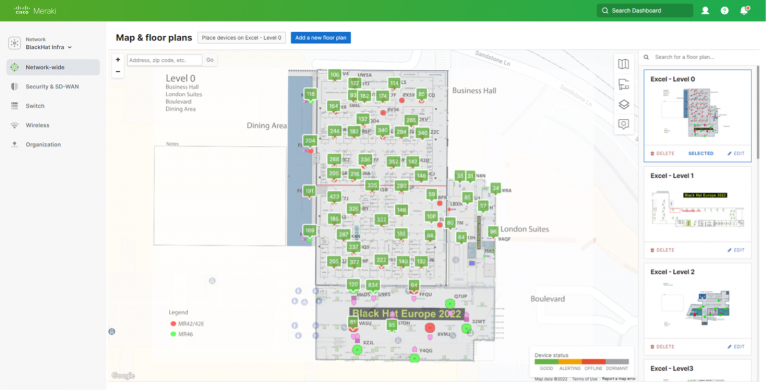
Below is the Business Hall at lunchtime, on the opening day of the conference. You can see no live APs in the bottom right corner of the Location heatmap. This is an example of adapting the plan to reality onsite. In past Black Hat Europe conferences, the Lobby in that area was the main entrance. Construction in 2022 closed this entrance. So, those APs were reallocated to the Level 1 Lobby, where attendees would naturally flow from Registration.
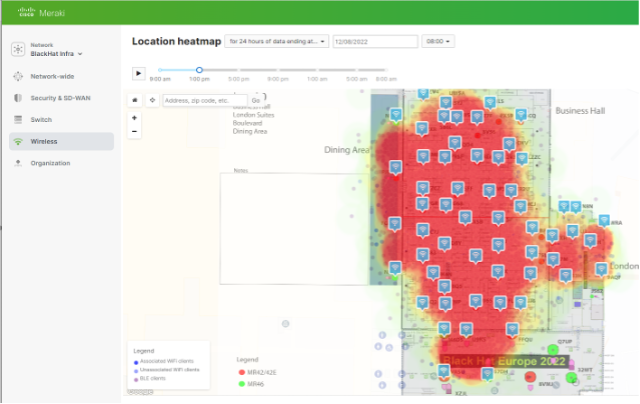
The floor plans and heatmaps also helped with the Training, Briefings and Keynote network resilience. Capacity was easy to add temporarily, and we were able to remove it and relocate it after a space emptied.
Meraki API Integration for automatic device blocking
During our time in the NOC, we had the chance to work with other vendor engineers and some use cases that came up led to interesting collaborations. One specific use case was that we wanted to block wireless clients, that show some malicious or bad behavior, automatically after they have been identified by one of the SOC analysts on the different security platforms, in addition we wanted to show them a friendly warning page that guides them to the SOC for a friendly conversation.
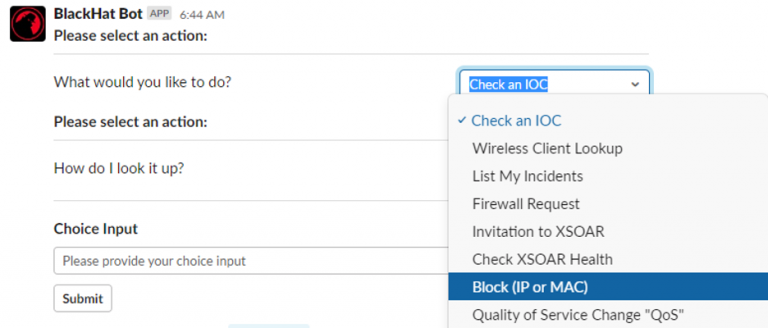
The solution was a script that can be triggered thru the interfaces of the other security products and attaches a group policy thru the Meraki Dashboard, including a quarantine VLAN and a splash page, via the Meraki APIs. This integration was just one of the many collaboration bits that we worked on.
Wi-Fi Air Marshal, by Jérémy Couture, Head of SOC, Paris 2024 Olympic Games
During the first day of training, in the Meraki dashboard Air Marshal, I observed packet flood attacks, against we were able to adapt and remain resilient.

I also observed an AP spoofing and broadcast de-authentication attack. I was able to quickly identify the location of the attack, which was at the Lobby outside the Business Hall. Should the attacks continue, physical security had the information to intervene. We also had the ability to track the MAC address throughout the venue, as discussed in Christian Clasen’s section in part two.
![]()
![]()
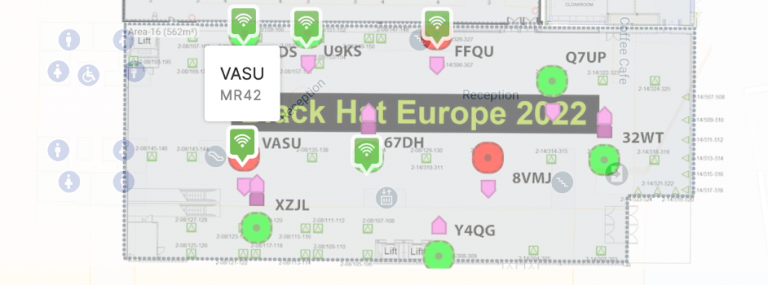
From our experiences at Black Hat USA 2022, we had encrypted frames enabled, blunting the attack.
Meraki Dashboards, by Rossi Rosario Burgos
The Meraki dashboards made it very easy to monitor the health of the network APs and Switches, with the ability to aggregate data, and quickly pivot into any switch, AP or clients.

Through the phases of the conference, from two days of pre-conference setup, to focused and intense training the first two days, and transition to the briefings and Business Hall, we were able to visualize the network traffic.

In addition, we could see the number of attendees who passed through the covered area of the conference, with or without connecting to the network. Christian Clasen takes this available data to a new level in Part 2 of the blog.
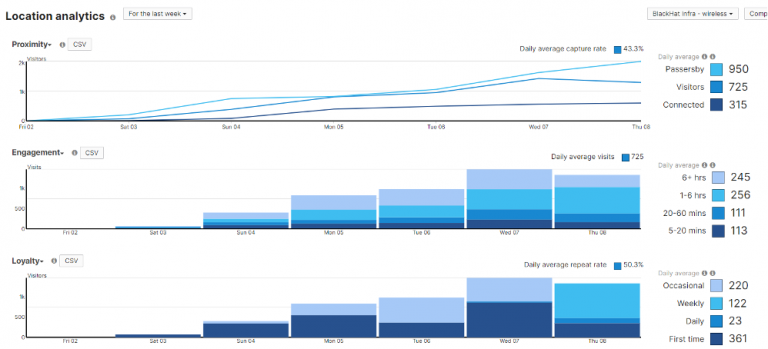
As the person with core responsibilities for the switch configuration and uptime, the Meraki dashboard made it very simple to quickly change the network topology, according to the needs of the Black Hat customer.

Meraki Systems Manager, by Paul Fidler
If you refer back to Black Hat USA 2022, you’d have seen that we had over 1,000 iOS devices to deploy, with which we had several difficulties. For context, the company that leases the devices to Black Hat doesn’t use a Mobile Device Management (MDM) platform for any of their other shows…Black Hat is the only one that does. So, instead of using a mass deployment technology, like Apple’s Automated Device Enrollment, the iOS devices are “prepared” using Apple Configurator. This includes uploading a Wi-Fi profile to the devices as part of that process. In Las Vegas, this Wi-Fi profile wasn’t set to auto join the Wi-Fi, resulting in the need to manually change this on 1,000 devices. Furthermore, 200 devices weren’t reset or prepared, so we had those to reimage as well.
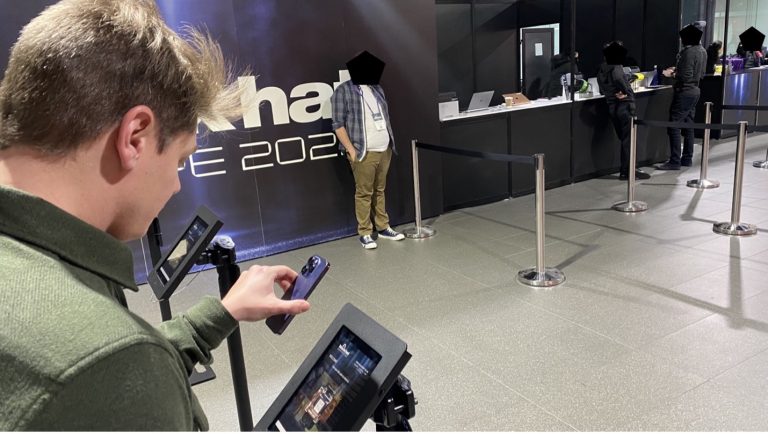
Black Hat Europe 2022 was different. We took the lessons from US and coordinated with the contractor to prepare the devices. Now, if you’ve ever used Apple Configurator, there’s several steps needed to prepare a device. However, all of these can be actions can be combined into a Blueprint:
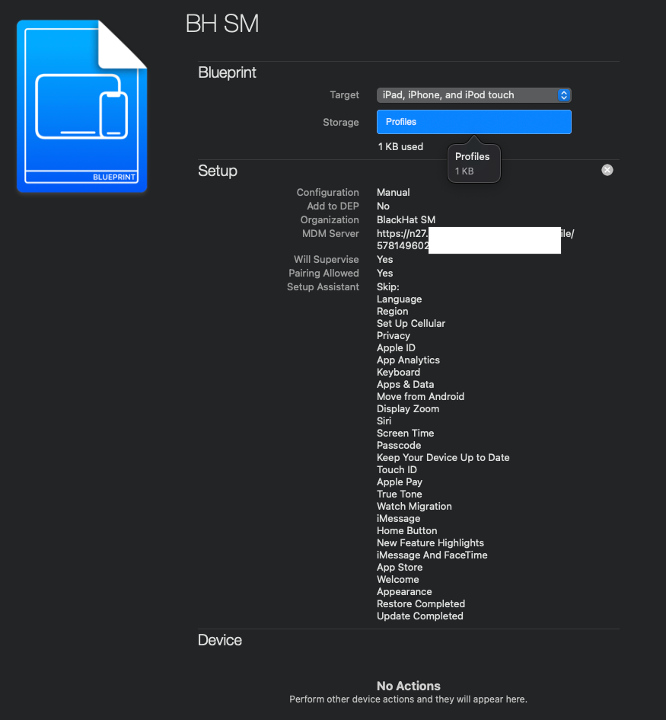
Instead of there being several steps to prepare a device, there is now just one! Applying the Blueprint!
For Black Hat Europe, this included:
- Wi-Fi profile
- Enrollment, including supervision
- Whether to allow USB pairing
- Setup Assistant pane skipping
There’s lots of other things that can be achieved as well, but this results in the time taken to enroll and set up a device to around 30 seconds. Since devices can be set up in parallel (you’re only limited by the number of USB cables / ports you have), this really streamlines the enrollment and set up process.
Now, for the future, whilst you can’t Export these blueprints, they are transportable. If you open Terminal on a Mac and type:
cd /Users/
You’ll see a file / package called something.blueprint This can be zipped up and emailed to some else so, they can then use the exact same Blueprint! You may need to reboot your computer for the Blueprint to appear in Apple Configurator.
Device Naming / Lock Screen Messages
As mentioned, the registration / lead capture / session scanning devices are provided by the contractor. Obviously, these are all catalogued and have a unique device code / QR code on the back of them. However, during setup, any device name provisioned on the device gets lost.
So, there’s three things we do to know, without having to resort to using the unwieldy serial number, what devices is what.
- The first thing that we do is to use the Meraki API to rename Systems Manager Devices. The script created has some other functionality too, such as error handling, but it is possible to do this without a script. You can find it here. This ensures that the device has a name: iOS devices default to being called iPhone or iPad in Systems Manager when they first enroll, so, already, this is incredibly helpful.
- The second thing we do is to use a simple Restrictions profile for iOS, which keeps the physical device’s name in sync with that in the dashboard
- Lastly, we then use a Lock Screen payload to format the message on the device when it’s locked:

In the footnote, you’ll see Device Name and Device Serial in blue. This denotes that the values are actually dynamic and change per device. They include:
- Organization name
- Network name
- Device name
- Device serial
- Device model
- Device OS version
- Device notes
- Owner name
- Owner email
- Owner username
- SM device ID
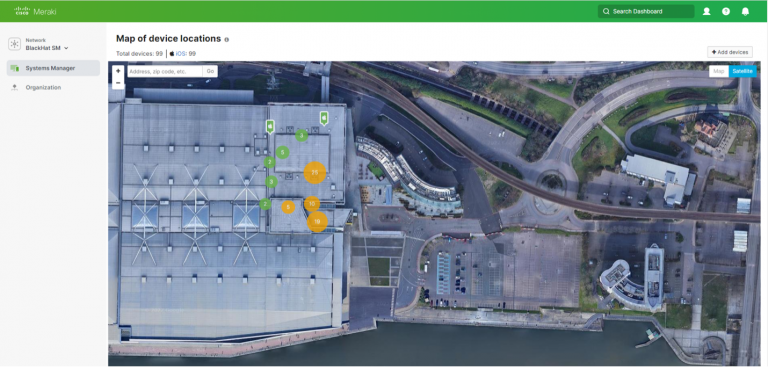
On the Lock Screen, it’s now possible to see the device’s name and serial number, without having to flip the device over (A problem for the registration devices which are locked in a secure case) or open systems preferences.
We also had integration with SecureX device insights, to see the security status of each iOS device.
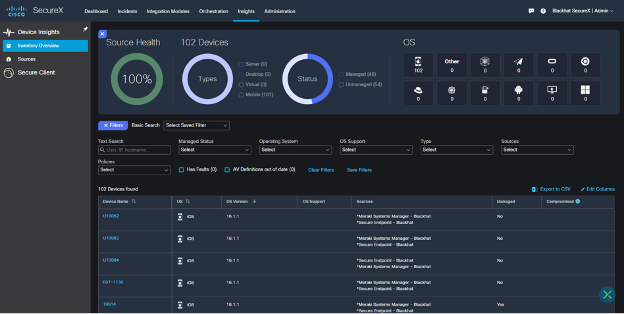
With the ability to quickly check on device health from the SecureX dashboard.
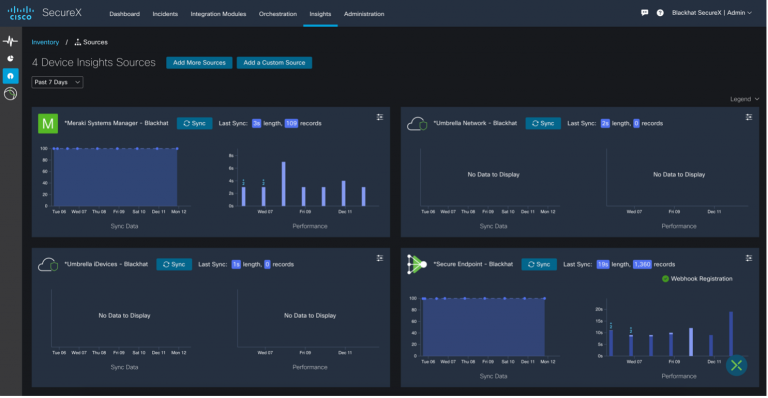
Data Security
This goes without saying, but the iOS devices (Registration, Lead Capture and Session Scanning) do have access to personal information. To ensure the security of the data, devices are wiped at the end of the conference. This is incredibly satisfying, hitting the Erase Devices button in Meraki Systems Manager, and watching the 100+ devices reset!
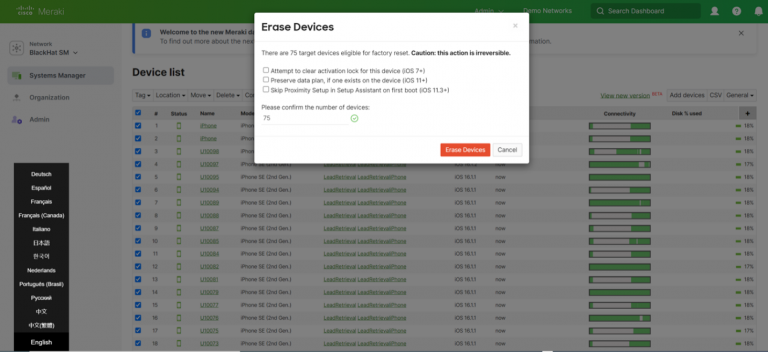
A Better Way to Design Training SSIDs/VLANs, by Paul Fidler
Deploying a network like Black Hat takes a lot of work, and repetitive configuration. Much of this has been covered in previous blogs. However, to make things easier for this event, instead of the 60 training SSIDs we had in Black Hat US 2022, the Meraki team discussed the benefits of moving to iPSKs with Black Hat NOC Leadership, which accepted the plan.
For context, instead of having a single pre shared key for an SSID, iPSK functionality allows you to have 1000+. Each of these iPSKs can be assigned its own group policy / VLAN. So, we created a script:
- That consumed networkID, SSID, Training name, iPSK and VLAN from a CSV
- Created a group policy for that VLAN with the name of the training
- Created an iPSK for the given SSID that referred to the training name
This only involves five API calls:
- For a given network name, get the network ID
- Get Group Policies
- If the group policy exists, use that, else create a group policy, retaining the group policy ID
- Get the SSIDs (to get the ID of the SSID)
- Create an iPSK for the given SSID ID
The bulk of the script is error handling (The SSID or network doesn’t exist, for example) and logic!
The result was one SSID for all of training: BHTraining, and each classroom had their own password. This reduced the training SSIDs from over a dozen and helped clear the airwaves.
Check out part two – Black Hat Europe 2022 NOC: The SOC Inside the NOC
Acknowledgments
Thank you to the Cisco NOC team:
- Meraki Network: Evan Basta, Sandro Fasser, Rossi Rosario Burgos, Otis Ioannou, Asmae Boutkhil, Jeffry Handal and Aleksandar Dimitrov Vladimirov
- Meraki Systems Manager: Paul Fidler
- Cisco Secure: Ian Redden, Christian Clasen, Aditya Sankar, Ryan MacLennan, Guillaume Buisson, Jerome Schneider, Robert Taylor, Piotr Jarzynka, Tim Wadhwa-Brown and Matthieu Sprunck
- Threat Hunter / Paris 2024 Olympics SOC: Jérémy Couture
Also, to our NOC partners NetWitness (especially David Glover, Iain Davidson, Alessandro Contini and Alessandro Zatti), Palo Alto Networks (especially James Holland, Matt Ford, Matt Smith and Mathew Chase), Gigamon, IronNet, and the entire Black Hat / Informa Tech staff (especially Grifter ‘Neil Wyler’, Bart Stump, Steve Fink, James Pope, Jess Stafford and Steve Oldenbourg).
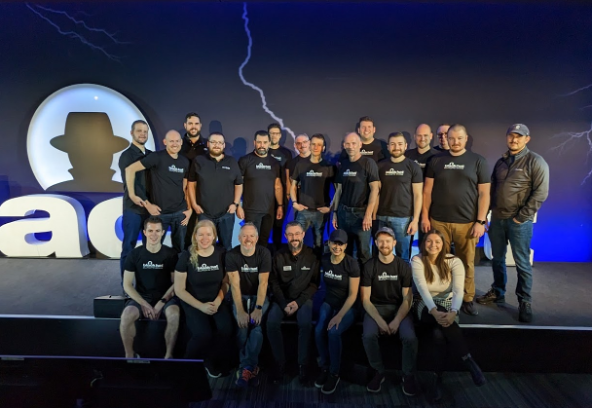
About Black Hat
For 25 years, Black Hat has provided attendees with the very latest in information security research, development, and trends. These high-profile global events and trainings are driven by the needs of the security community, striving to bring together the best minds in the industry. Black Hat inspires professionals at all career levels, encouraging growth and collaboration among academia, world-class researchers, and leaders in the public and private sectors. Black Hat Briefings and Trainings are held annually in the United States, Europe and USA. More information is available at: blackhat.com. Black Hat is brought to you by Informa Tech.
We’d love to hear what you think. Ask a Question, Comment Below, and Stay Connected with Cisco Secure on social!
Cisco Secure Social Channels

